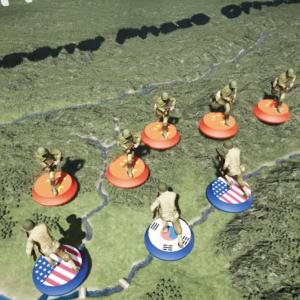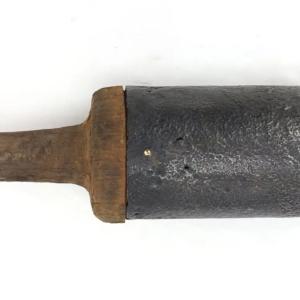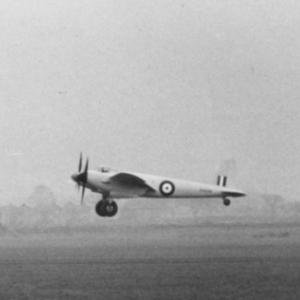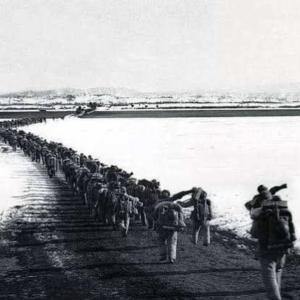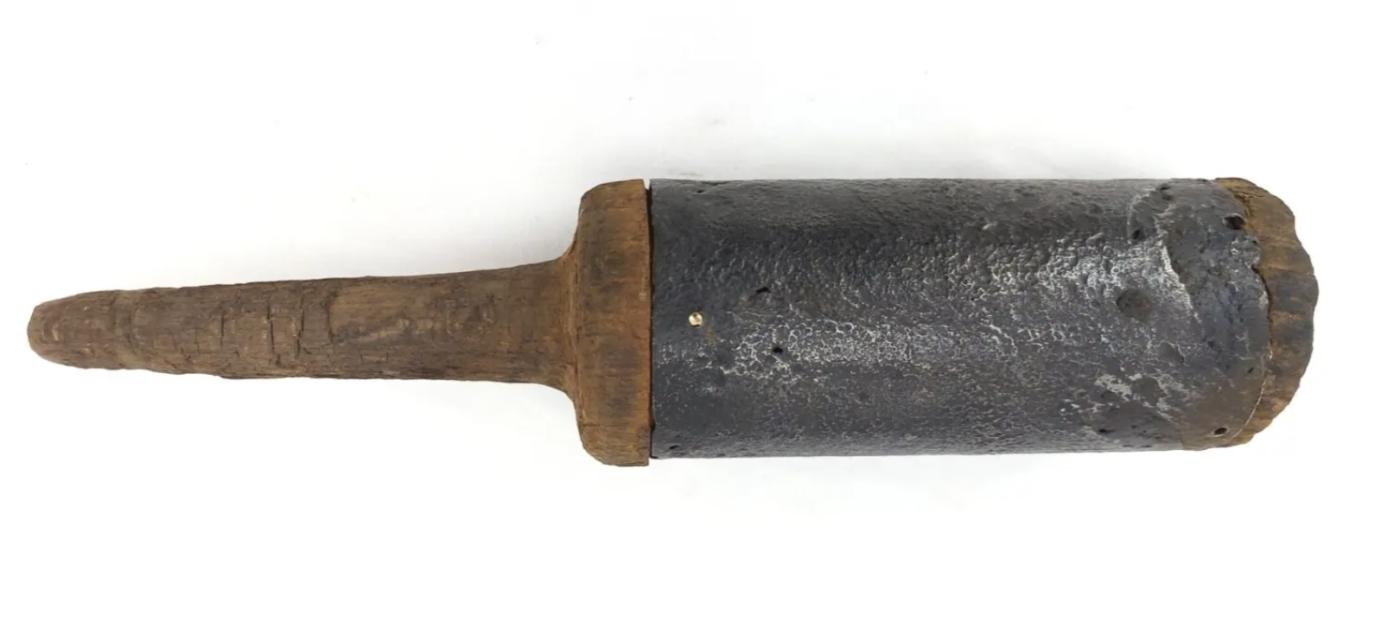
French Petard Grenade
During the static slaughter of the Western Front, barbed wire was not merely an obstacle but an active part of the battlefield—an entanglement that channelled attackers into kill zones and turned no-man’s-land into a killing field. The French response included a small, specialised demolition device commonly called the barbed-wire petard (pétard de destruction pour barbelés). These were not fragmentation grenades in the classical sense but compact blast charges designed specifically to break or displace wire entanglements so infantry could exploit the gap.
The petard’s appearance and exact construction varied through the war because need was urgent and improvisation common. Early models were simple sheet-metal cylinders filled with a blasting charge; later patterns grew larger and sturdier. A common configuration was a cylindrical metal body with a wooden plug or base and a central bore to accept a fuse or igniter. Some versions incorporated a wooden handle or short pole fitted into that central tube so the charge could be pushed into the wire, ignited, and then the operator could retreat to a safer distance before detonation. Other examples were made to be thrown or to be placed using a small pole or long-handled implement.
Explosive filling tended to be the period’s standard blasting mixtures rather than high-precision military-only compounds; cheddite- or nitrate-based explosives and similar blends were used where available. Reported fill weights in contemporary descriptions and surviving examples vary, but a smaller first model is often cited in the order of a few hundred grams of explosive (around 400 grams as a commonly quoted figure), while later, larger models carried roughly twice that charge (around 800 grams). Those amounts made the device a powerful local blast charge for its size—sufficient to displace short sections of wire, uproot lightweight stakes, and produce localized gaps when used with good placement and favorable ground conditions.
Design and manufacture were not the product of a single, widely publicised inventors’ name and factory line. The petard is best understood as an operational category that emerged from the work of French ordnance bureaux, field engineers, and small workshops responding to urgent tactical needs. Some were produced in government arsenals, some by local contractors, and many were modified in the field. Surviving specimens often show repairs, reinforcements, or local adaptations, which reinforces the sense that these devices were practical, rapidly deployed solutions rather than tightly standardised, high-volume industrial products.
Because production was partly decentralised and often local, there is no single reliable, universally accepted production total. The devices were produced in numbers sufficient for use by assault forces in 1915–1916 and were a recognised part of the toolbox for clearing obstacles, but they were not manufactured on the same bureaucratic, recorded scale as rifles, artillery shells, or standard-issue grenades. That relative informality helped units obtain what they needed quickly but also means exact wartime totals are hard to establish from surviving documentation.
Tactically, the barbed-wire petard was used to create short, exploitable gaps immediately before or during an assault. Assault teams—often engineers or specially trained infantry detachments—would approach the wire under cover or at a prearranged moment, place one or more charges against the most vulnerable points of the entanglement or its supports, light the fuse, and withdraw to a safe distance. When multiple charges were used in sequence, a lane could be formed by detonating them in overlapping arcs; when used singly the goal was to make a breach large enough for a few soldiers to pass through and begin clearing or widening the gap under covering fire.
Effective use required judgment: soil type, heft and tension of the wire, the depth and anchoring of stakes, and even recent bombardment all changed how much explosive was needed and where it should be placed. In sodden or heavily rooted ground the blast dissipated more quickly, often requiring more than one charge or closer placement to overloaded stakes. Conversely, tightly tensioned, well-anchored wire could sometimes be dislodged by a surprisingly small blast if the charge detonated exactly at a stake or a tension point.
Operators developed practical techniques to maximise effect and safety. Charges were often lashed to short timber stakes driven into the ground beneath or beside wire anchors so the explosion tended to lift and twist the supports rather than simply blowing out loose sections. When possible, charges were triggered simultaneously or in quick succession to prevent defenders from responding between blasts. The presence of a handle or pole reduced the need for a sapper to kneel directly over the wire, lowering exposure to snipers and flanking fire during emplacement.
Several interesting practical and anecdotal notes come from period accounts and museum examples. Because the devices sat somewhere between improvised demolition and regulated ordnance, many units produced their own patterns adapted to local soil and tactical preferences; this led to a surprising variety of shapes and fusing methods. Some field-expedient versions used readily available blasting caps and short lengths of detonating fuse packed into hand-formed metal casings; others were neat, workshop-produced cylinders carrying standardized igniters. Collectors and surviving specimens also show simple safety measures—wooden plugs, cork coverings, or short lengths of hose protecting fuses—which reflect soldiers’ practical concern for transportation and handling in muddy, cramped conditions.

